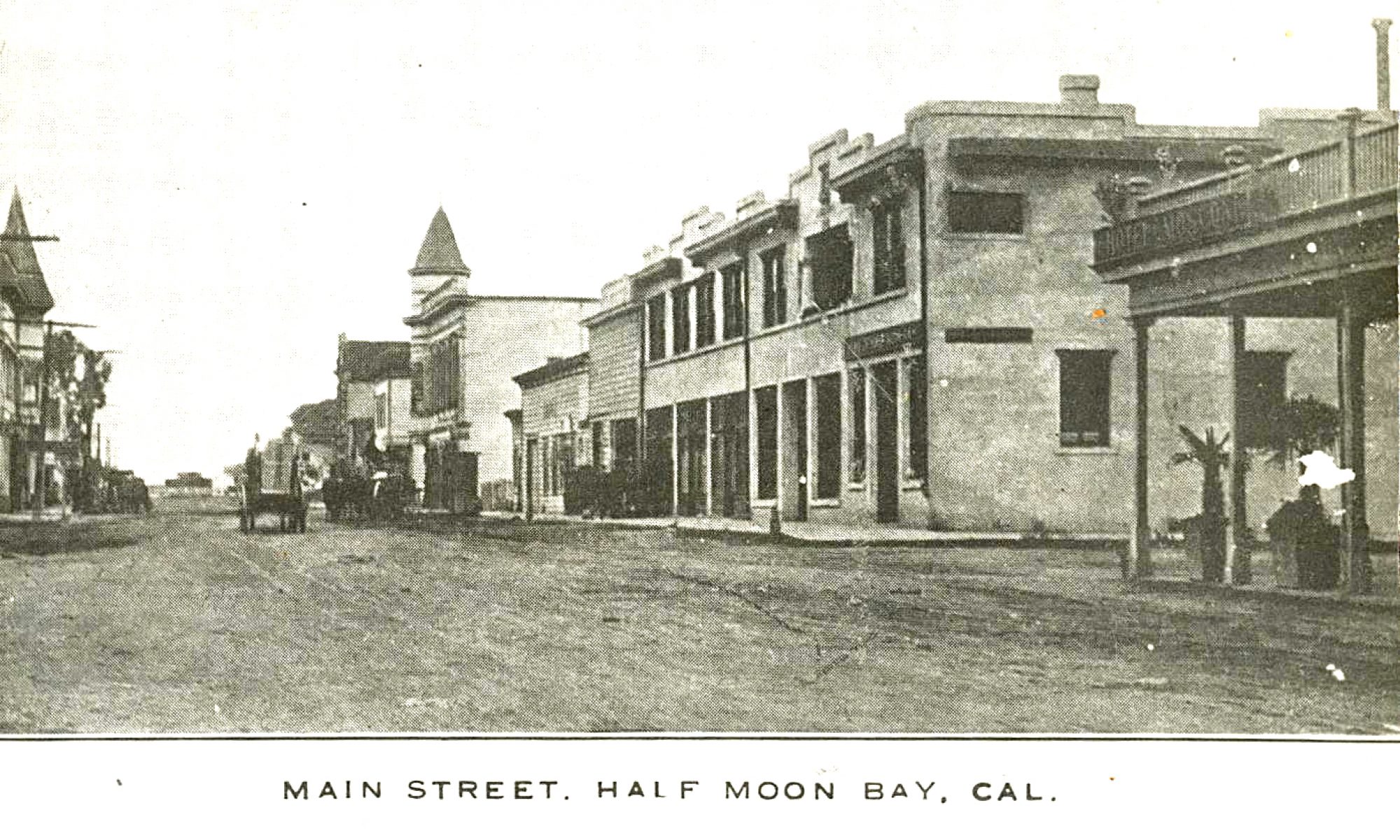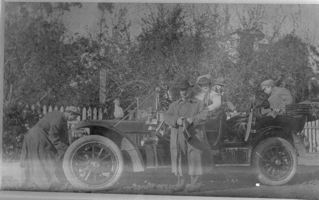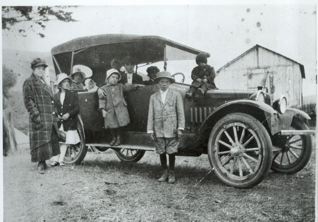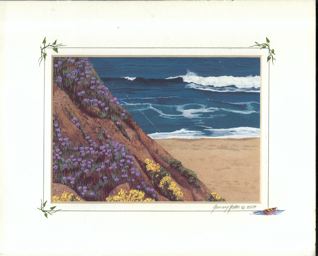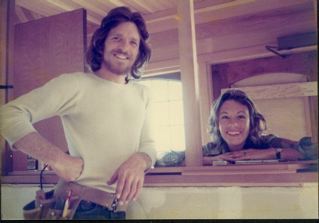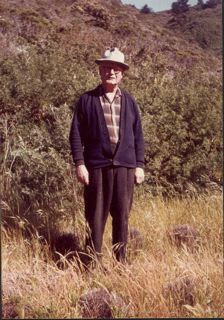 (Photo: The Coastside artist Galen Wolf posing somewhere on his property at Frenchman’s Creek, north of Half Moon Bay).
(Photo: The Coastside artist Galen Wolf posing somewhere on his property at Frenchman’s Creek, north of Half Moon Bay).
The War and the Korean War suddenly overflowed the bay area. A new, almost unrecognizable county swiftly came to overlay the quiet fields and hills. It was marked with every facet of today.
Immense roads, overpasses, crowded traffic, tract homes and supermarkets were jammed alike with the crowds and tensions of a swarming life.
We will invoice only its assets. Many good and prosperous people, living in a gentle healthy climate. Fine schools, libraries, parks, dustless roads and well-kept lawns everywhere. Houses furnished with immaculate plumbing, formica drains, television and two-car garages. Often too a plywood boat with outboard motor hanging to its square transom.
Busy endless goings and comings in glistening automatic cars. Nearby industries, mostly electronic and often quite secret. The five-day week with its long weekend. A truly volcanic stream of traffic going to the crowded places.
…To be continued…
